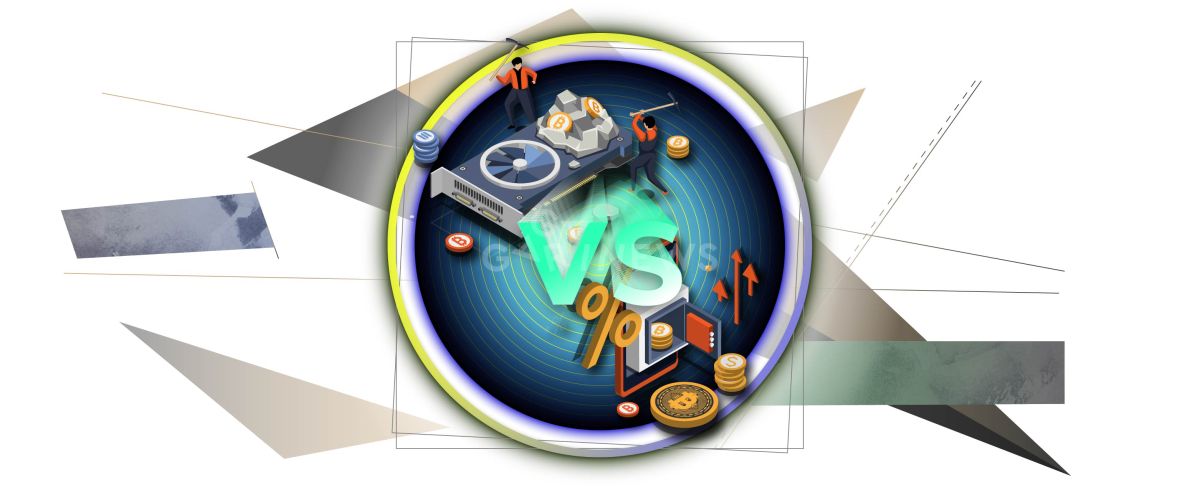PoW vs PoS: what are the key differences between the algorithms

Every cryptocurrency operates on a blockchain. Each blockchain uses a specific consensus algorithm. Each algorithm establishes fair rules of the game for all participants.
On this page
Blockchains of many famous coins function using Proof-of-Work and Proof-of-Stake algorithms.
The PoW group includes cryptocurrencies such as Bitcoin, Dogecoin, Litecoin, Ethereum Classic, Zcash, all Bitcoin forks and others. PoS coins with the largest market capitalization include: Ethereum, Cardano, Solana, and others. Ethereum recently switched from PoW to PoS, so this coin has had time to test both algorithms.
As you know, nodes are necessary for the formation of new blocks in chains. They perform the role of transaction validators, for which they receive a reward from the network.
In Proof-of-Work, nodes function on the basis of mining equipment that performs complex hash calculations. The more powerful the hardware (ASIC, FPGA, GPU, CPU), the higher the chance of creating a block and receiving a reward from the network.
In Proof-of-Stake, nodes operate on the basis of a pool of coins that are blocked there. The more coins there are in the pool, the higher the chances are for the owner of the node to create another block and receive his reward for it. PoS is considered more environmentally friendly because it does not require the presence of mining equipment and significant electricity costs to support its uninterrupted operation.
Tools for countering “51% attacks”
In addition to establishing a level playing field for all participants in coin issuance, consensus algorithms also serve an important security function. They must counter “51% attacks” and support the principles of decentralization.
In addition to keeping a copy of the blockchain by all full nodes, in Proof-of-Work additional factors that counteract attempts to monopolize the network are halving and the constant increase in the mining equipment cost.
As you know, halving in PoW coins was established as a mechanism to counteract inflation (if such a word could be used in relation to digital assets) and an increase in the value of cryptocurrencies during the entire emission cycle. Approximately once every four years, as a certain number of blocks is reached, the miner's reward is halved. But it so happened that halving began to contribute to the strengthening of decentralization and resistance to “51% attacks”. All because owners of mining equipment are forced to upgrade it every four years in order not to lose the profitability of this business. So, with each halving, mining equipment becomes more powerful and valuable. In theory, to resort to a “51% attack” on the Bitcoin network, an attacker must have the equipment, the cost of which would be in the billions of US dollars. This is a significant stopping factor even for the richest people on the planet, who are used to always diversifying risks and never putting “all their eggs in one basket.”
In Proof-of-Stake, in addition to storing a copy of the blockchain by all full staking nodes, there are also several additional protection mechanisms against the “51% attack”.
The main one is the factor of market price formation in accordance with supply and demand. To organize a “51% attack”, a potential attacker needs to concentrate more than 50% of all coins in his hands. Buying that many coins through centralized (CEX) exchanges and public trading platforms would cause their price to skyrocket and make such an attempt too costly. In addition, even at the first stage of the implementation of such a plan, the developers, thanks to the constant monitoring of the market, track such attempts and neutralize these attacks. The punishment can be different – from the removal of the attacker's node from the network with the loss of the right to participate in the consensus to the destruction of the validator's pledge.
The option with decentralized (DEX) exchanges or OTC-deals (over the counter – over-the-counter market) is also unlikely, because these markets have a limited supply and inflated lot prices. It will also be economically unprofitable for the potential organizer of the “51% attack”.
Which of the algorithms is more contributing to decentralization
Opinions differ here. Opponents from both camps believe that it is their algorithm that promotes decentralization the most. But there are objective factors that indicate this.
PoW constantly incentivizes miners to find geographic locations with the cheapest sources of electricity. Considering that for a large amount of equipment, the cost of electricity is a significant cost item, miners prefer jurisdictions loyal to mining with the lowest electricity tariffs. Because cheap electricity is available in different regions of the world, mining farms and the legal entities that operate them also have a wide geography. In addition to geographic decentralization, it also contributes to the decentralization of PoW-crypto-assets in general around the world.
PoS cryptocurrencies are potentially more vulnerable to centralization than PoW, as control over the network is determined by control over capital (the wealthy will become even wealthier). This approach has potentially more risks and temptations towards centralization than alternative schemes using industrial equipment, labor or cheap energy sources.
The content on The Coinomist is for informational purposes only and should not be interpreted as financial advice. While we strive to provide accurate and up-to-date information, we do not guarantee the accuracy, completeness, or reliability of any content. Neither we accept liability for any errors or omissions in the information provided or for any financial losses incurred as a result of relying on this information. Actions based on this content are at your own risk. Always do your own research and consult a professional. See our Terms, Privacy Policy, and Disclaimers for more details.

























